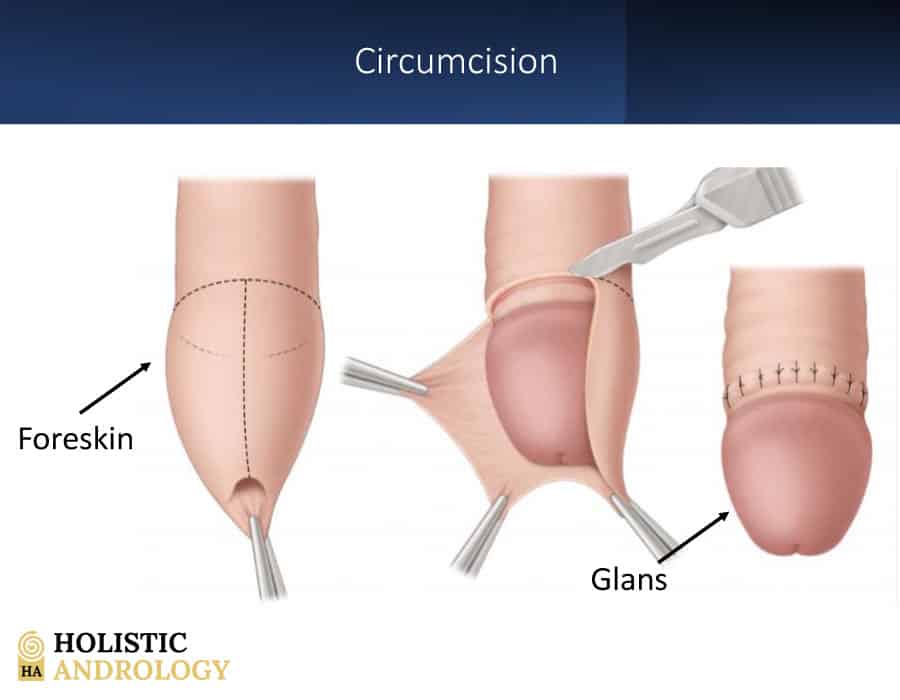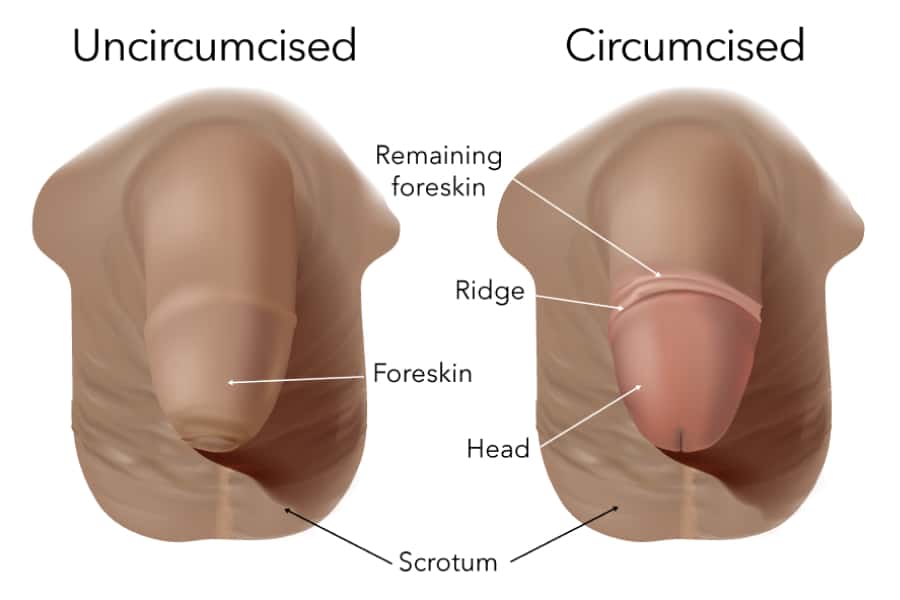Circumcision
Circumcision is a surgical procedure in which the foreskin, the flap of skin that covers the head of the penis (glans), is removed. It can be performed with different surgical techniques. This treatment option is used primarily on phimosis patients who have recurrent infections, have reached adolescence, and have developed the disease in adulthood.
Patients with lichen sclerosis phimosis should always undergo circumcision.
What does circumcision mean?
Circumcision is a very ancient practice, dating back to at least 6,000 years ago and very widespread in Egypt, which is still practised today both in a medical and cultural sense, especially in some religions such as Judaism and Islam.
This surgical method consists of the total removal (excision) of the foreskin of the penis, which thus leaves the terminal part of the penis (called the glans) uncovered.

The benefits of circumcision
- It prevents the stagnation of urine and smegma between the foreskin and glans on a hygienic level. It is believed that this can decrease the chances of developing balanitis, posthitis, or balanoposthitis.
- Lower risk of getting urinary tract infections.
- HIV, AIDS, HPV, herpes simplex type 2, and trichomonas are less likely to be passed on sexually.
- Less likely to develop penile cancer.
- Lichen sclerosus of the penis.
- Urethral stricture.
- Hypospadias.
- Chronic penile lymphedema.
- Growths affecting the penis (cancer and cancer of the penis).
However, choosing to undergo circumcision for the sole purpose of preventing these events is not encouraged by scientific societies.
Circumcision: what it is for and why it is done
When is circumcision performed?
Circumcision is one of the most commonly performed surgical procedures globally and has been served since ancient times. In the Jewish and Muslim worlds, the ritual circumcision of newborns is practised for religious and social reasons.
Even if performed for religious reasons, circumcision remains a surgical intervention that a qualified operator must act in an appropriate context and with the proper safety guarantees.
In the medical field, circumcision is a controversial topic.
The presence of phimosis in a child is a cause for concern for the family. The doctor must advise parents on what to do, evaluating the pros and cons of subjecting the minor patient to anaesthesia and surgery. In most cases, phimosis tends to resolve with growth, but surgery becomes necessary if it does not determine or occur in adults.

Based on the scientific literature, it is estimated that phimosis is present in 10% of 3-year-olds, 8% of 6-year-olds, and only 1% of 16-year-olds. Unless repeated infections cause phimosis, surgery can be put off in children with physiological phimosis. Instead, corticosteroids could be used on the skin to get rid of phimosis faster.
If phimosis is still present in adolescence, it can cause discomfort or pain when urinating and hinder erection, problems that at this point can only be solved with surgery. Similarly, pathological phimosis in adults can hardly be resolved without surgery. In the case of phimosis caused by Lichen sclerosus (balanitis sclerotica obliterans), a chronic skin disease of unknown origin that causes phimosis in both children and adults, circumcision is necessary. Circumcision is also performed in the case of paraphimosis, an emergency in which the phimotic foreskin, failing to return to position after the glans has been uncovered, "chokes" the penis.

Many different surgical techniques can be used; some are for infants, others for older children and adults; some methods, used primarily on children, involve special tools. Otherwise, a scalpel or laser is used.
It is possible to perform a partial circumcision then. It is called postectomy. In general, a circular incision is made in the foreskin to remove the preputial tissue and sutures are placed all around the glans with resorbable sutures that fall on their own after 7–10 days.







